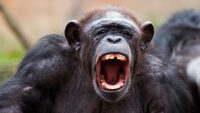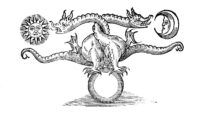At the subatomic, quantum level upon which all physical matter appears to be built is freedom, probabilistic indeterminacy that manifests to us as choice or even purposefulness. Although ultimately subject to the physical laws of the universe, only a fraction of which we fully understand, as far as physical science can determine, this is freedom at its tiniest and most elemental.
Electrons, for example, spin around atomic nuclei in a cloud of varied trajectories, navigating and changing their distance from the nuclei seemingly at will. Such freedom of choice at the micro, subatomic level remains operative and observable at the scaled-up macro-level; when driving to the supermarket, for example, we freely make navigational choices all the time.
From a cellular standpoint, freedom of choice can be easily observed in plants. The apical meristem is the location in living plants where active growth takes place, at the tips of roots and shoots most prominently. It is here where the appearance of freedom of choice can be seen in the formation of white spots on otherwise green surfaces, for example. As plant cells divide in the apical meristem, the fate of becoming green or white is not entirely predetermined. While a generalized pattern of spots is genetically indicated, it is not absolute. For this reason the precise location of white spots varies from leaf to leaf on an individual plant. Turning white or green, it appears, is a matter of choice or resonance at the subatomic level. Shakespeare nailed it. To spot or not to spot? That is the question.
DNA is less of a rigid plan than a set of options; what science previously designated “junk” genes turns out to be a huge library of evolutionary options from which to choose. It’s life’s conditions that prompt such freedom of choice, what science now calls epigenetics. While the universe of genetic options – the library so to speak – may be limited, experiences, events, conditions, and reactions are virtually infinite; such are the epigenetic factors that act upon gene expression. In this way, the indeterminate nature of becoming embraces freedom.
Indeterminacy is not limited to the living; even inanimate matter is subject to variance at the subatomic, quantum level. Crystals, for example, display a process of orderly self-organization that’s almost life-like, a process that requires some sort of subatomic feedback mechanism or resonance that insures or varies the integrity of crystal formation, not altogether unlike what happens in a plant’s apical meristem.
The existence of such underlying feedback mechanisms in both living and non-living matter – and it’s worth noting here that living things are entirely comprised of non-living matter – points to a universe that is itself fundamentally free. In this sense, the universe is always monitoring itself and exercising its freedom. The self-organizing, free evolution of the cosmos has engendered our own and that of all animal life.
Classifying animals as wild is somewhat of a misnomer; non-domesticated animals are not wild, they are free, and while all living things are slaves to nature, unlike other animals, people struggle with freedom – freedom from others, freedom from the constraints of human systems, and even freedom from our own imagination and feelings.
Although having dispensed with fixed time and space, Einstein refused to accept the indeterminate freedom of quantum mechanics. “God,” he surmised, “does not play dice with the universe.” Yet, into this inconceivably vast, freely evolving universe you were born. Now imagine the probabilities of that!






Be First to Comment